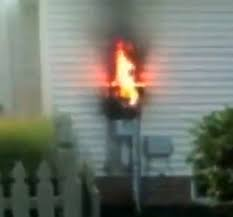- Some are contemplating how to respond to the long-term loss of electricity if/when the grid goes down due to attack, accident, or error.
- A report in Australia, done by the government to prove that smart meters are emitting levels below their “Safety Code 6”, has proven that the utility companies and the government lied about the number of signals sent each day. Just as in California, these meters and the grid are emitting 10s of 1000s of signals each day. Our meters do, too. That is how the mesh grid works. British Columbians have been told the same thing: “only 4-6 signals a day”.
“However, the study does provide interesting data on the average number of transmissions (pulses) which occurred over a one hour period at each of the 55 properties which were surveyed. The results are not pretty. Extrapolating the data shown on pages 80 – 81 of the report to a 24-hour period, the median number of pulses was a staggering 11,988 pulses per day for meters in the mesh networks, 10,992 pulses per day for meters in AusNet Services’s WiMAX network and 20,280 pulses per day for meters in the 3G network deployed by AusNet Services to reach outlier meters. The averages (arithmetic means) were considerably higher; in the case of the mesh networks, where the majority of the testing was performed, this amounted to an average of 44,314 pulses per day.”
****************************************
Letters:
From: Jim Ervin (named used at author’s request)
Sent: August 2, 2015 1:05 PM
Cc: Dennis and Sharon Noble <dsnoble@shaw.ca>
Subject: insurance industry
To whom it may concern,
I wish to know what kind of control you have over the insurance industry, specifically in their duty to notify clients of potential fire hazards in their homes. Does such an obligation exist and if not, why not?
Jim Ervin
***********************************
Newsletter prepared by Sharon Noble


